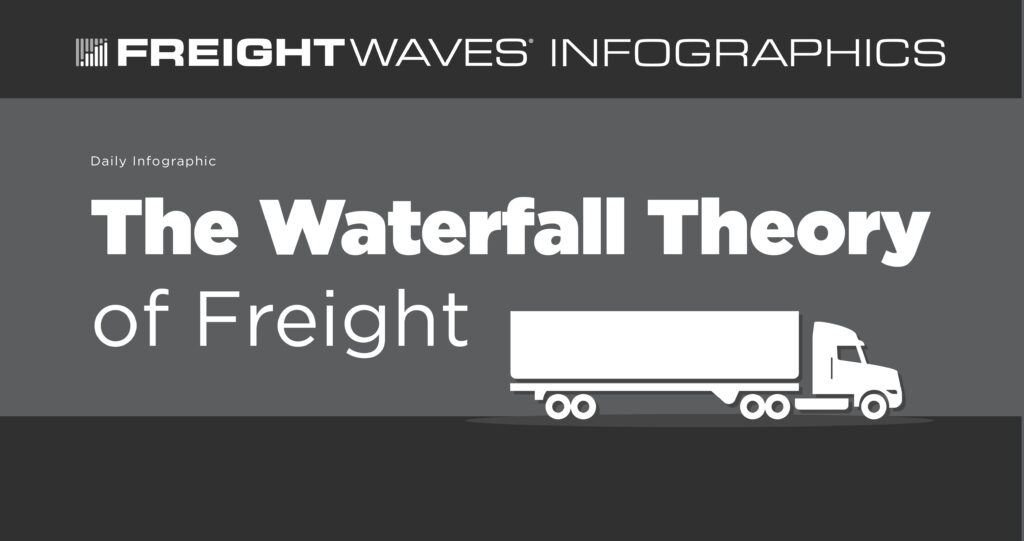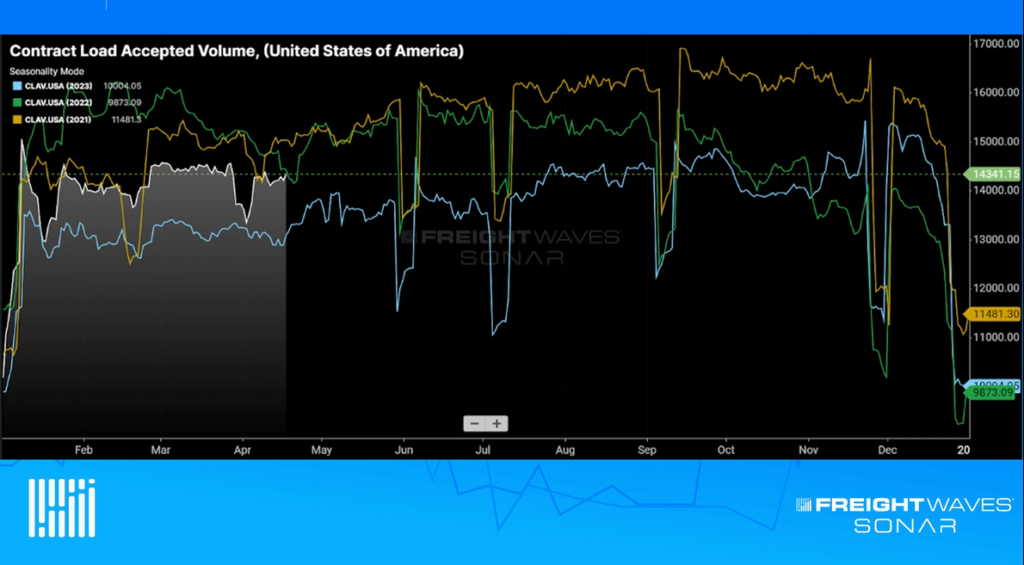Transportation rate analysis is a core part of any seasoned freight forecaster’s role. While the trucking contract market represents 85% of the freight volume in the for-hire truckload industry and the trucking spot market represents just 15% of truckload demand, the most volatile rates in the truckload industry can be found in the spot market. Anyone who is trying to conduct a transportation rate forecast or transportation rate analysis should understand how spot rates are calculated. We attempt to describe the factors that impact spot market rate quotes.
Spot rates are one-time or short-term rate quotes that are given to a shipper or broker for one load or set of loads. Contract rates are rates that are fixed for a period of time and do not fluctuate. Assessorials may be added to a spot or contract load for any service or activity that goes beyond the linehaul rate.
Spot rates for the full truckload market change daily. This is true for all trucking markets whether it is Los Angeles, California or Dubuque, Iowa. While freight market data, including load volumes and truck capacity, is used to build freight forecasting models for specific origin and destination pairs, there are several other factors that determine trucking spot rates.
In fact, there are hundreds of variables to consider when forecasting trucking spot rates. The most important are listed below.
Supply and Demand – Spot market rate changes depend on the magnitude of changes in load volumes and rejection rates. This is most often measured by tendered load volumes and tendered rejection rates in a freight market. The changes day over day drive spot rates. When outbound load volumes increase in Memphis at a greater rate than truck capacity measured by tender rejection rates, then spot rates will climb. The opposite is true – when outbound load volumes decline in Memphis at a greater rate than truck capacity declines, then trucking spot rates will decrease.
Market share – The more load volumes a freight market has the larger its market share. Load volumes are often characterized as the liquidity in a freight market. The higher the liquidity in the freight market, the more consistent the spot rates are over time. Chicago and Atlanta are both large freight markets with a very liquid lane. Trucking spot rates for this lane will vary depending on supply and demand but should have little day-to-day volatility. For an illiquid lane with sparse volume like North Platte, Nebraska to Augusta, Maine, trucking spot rates will have high volatility. This illiquid lane might have only one shipper and one carrier at any given time. The spot rate in this case depends on the shipper’s need to move its load and the carrier’s desire to run the lane.
The day of the week – Monday and Friday in most freight markets are the highest load volume days. The premium over the average spot rate for a Monday or Friday pickup could be more than the same load on a Tuesday or Wednesday. Often there is a steep premium a shipper must pay for short- or even medium-haul loads that pick up on a Friday and deliver on Monday. The reason for this is carriers are paid per mile. A 200-mile load over the weekend would have a fraction of the earning power of an 800-mile load. So, a premium is paid for the short-haul load to compensate the carrier for the lack of weekend miles.
Time of the day – Truck capacity in any given market expands and contracts throughout the day. Tendered load volumes also increase and decrease during the day. This is due to shipping hours, tendered loads lead times, and scheduled appointments. For example, Monday mornings are usually busy because over the road drivers deliver their loads after driving all weekend. For shippers that need freight picked up on Monday morning, there is a premium over the spot market rate because most of the truck capacity in the market is in the process of unloading.
Same-day loads – The reasons for a same-day load are varied. Often the production of the cargo is not finished until that day and must ship at once to meet delivery times. Other reasons for same-day loads include a rejected load tender or a truck that cannot make the pickup time. Since a same-day load requires finding a truck on short notice, a shipper usually pays a premium over the spot market to ensure a truck is secured that can make the pickup on short notice and deliver on time.
Commodity type – High-value loads usually have higher rates than lower-value commodities. Packaging, paper, wood and grains are examples of low-value commodities. Machinery, finished engineered goods and consumer goods are high-value commodities. Commodities with higher values and higher gross margins are often more expensive to ship as service is more valued over price. Machinery that needs to be delivered on-time to a job site for a crew to use on a construction project is an example.
Dwell time – A general rule of thumb for the trucking industry is two hours for loading or unloading before detention is paid to drivers. For shippers and consignees that consistently take over two hours to load or unload, carriers moving spot freight will normally charge a premium for this time. This is a simpler method for carriers to guarantee they are paid for detention, rather than trying to collect an accessorial charge from either the shipper or a freight brokerage after the load is delivered.
Learn More About SONAR Freight Data and Analytics
If you are interested in tracking the freight market, including contract and spot rates, FreightWaves SONAR offers over 150,000 indexes, most of which are updated daily. The world’s fastest, most accurate freight data includes trucking spot rate indexes, tender indexes and market balance indexes. SONAR freight tender indexes are created based on actual electronic load requests from shippers to carriers, meaning you know that the index is measuring an actual load transaction.
SONAR offers proprietary data that comes from actual load tenders, ELD devices, and transportation management systems, along with dozens of third-party global freight and logistics-related index providers like TCA Benchmarking, Freightos, ACT, Drewry and DTN.
SONAR offers spot rate data from Truckstop.com, including all-in truckload spot rates, per mile truckload spot rates, and trucking load volume.
To find out more about FreightWaves SONAR, sign up for a demo.












